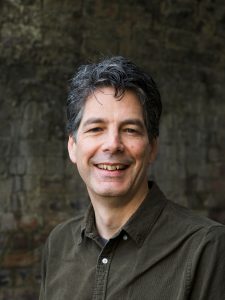
There is a common misunderstanding about Focusing that it is all about the body, that you have to feel it all in the body and the body is where all the wisdom lies. To me, this is too black and white, and a little literal. What we can often forget is how important it is to tell a story, to give space to the narrative, or to share the narrative. When the original research was done into Focusing, they originally called what they found “a different way of speaking”. They didn’t say it was people listening to their bodies, they said it was about a different way of speaking. They saw that when people spoke, and at the same time referred to their direct felt experience, then change happened. So I want to talk more about this way of speaking.
It’s also true to say that sometimes Focusing is so appealing because we have already talked ourselves to death, and we don’t want to talk any more about it… So here we are, in between this extreme of talking about it too much and not talking about it at all. So how do we navigate this?
Here are four occasions when telling the story or sharing some narrative might be helpful.
The first reason to give some narrative is to evoke something – to bring the real felt quality of it alive in the body. By speaking about it we bring something alive… but be mindful of just going on and on and never pausing!
The second kind of situation is when we speak about something that we have never spoken about before. This can be a good moment to tell a story, not a pre rehearsed story, but more like describing what this issue is like in your life: what this relationship breakdown is like; what this tricky issue in my parenting is like; what this significant visit to the hospital was like. And as you speak it, check in with your body. See what you notice, see what stirs inside, what feelings or images come, pay attention to what fits and what doesn’t. Pay even greater attention to what you can feel but cannot out into words, that’s where the good stuff is! So that’s one story to tell – the story that has never been told.
The third kind of story or narrative is the story that a part has to tell. We are giving it space to say what it has never said. Sometimes we get in touch with a part of us in Focusing and it’s never had a chance to speak. It’s never had a chance to express its worries, its pains, its wishes, longings or beliefs, so give it a chance to say those things… and listen.
The fourth kind of story is when we feel the presence of the deeper, more real story that our being knows – the story of the truth. The real truth, not the truth everyone else has been saying or our family has been saying but the real truth of what happened and how it impacted us. Where our soul speaks you could say. Or it could be the story of the deep hurt or wisdom that can finally reveal itself.
So we have four kinds of narratives that belong in Focusing, So please don’t block out the story, thinking it does not belong in Focusing. Be brave enough to have an important conversation in Focusing. Don’t leave out the important stuff! Say it!

